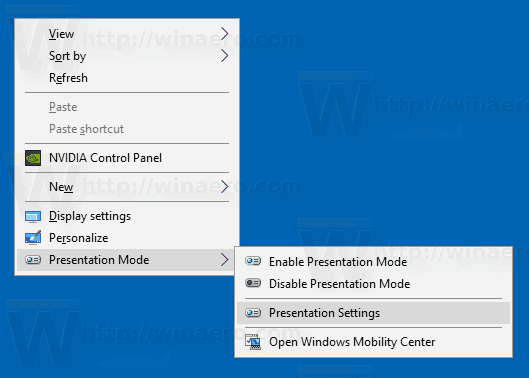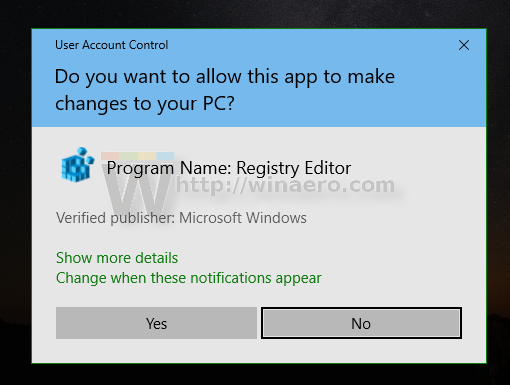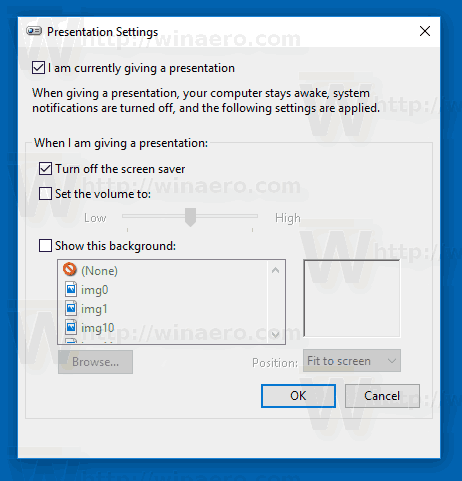Presentation Mode is designed to help users of portable devices (e.g. laptops). When enabled, it applies advanced changes to the operating system's configuration, so your computer stays awake, the screen saver can be disabled, the desktop background can be removed or changed to a specific image, and the sound volume can be set to a predefined value. To change these options faster, you can create a special context menu.
Advertisеment
When you enable presentation mode, your device stays awake and system notifications are turned off. It is possible to turn off the screen saver, adjust the speaker volume, and change your desktop background image. Your settings are automatically saved and applied every time you start a presentation unless you change them manually.
Presentation mode is only available on laptops by default. It is part of the Mobility Center app, which is not available on Desktop computers (but can be unlocked with a Registry tweak. See How To Enable Mobility Center On Desktop in Windows 10).
You can add the following menu to the Desktop context menu in Windows 10:

Before adding the context menu, ensure that your user account has administrative privileges. Now, follow the instructions below.
To add the Presentation Mode context menu in Windows 10, do the following.
- Download the following ZIP archive: Download ZIP archive.
- Extract its contents to any folder. You can place the files directly to the Desktop.
- Unblock the files.
- Double click on the Add Presentation Mode To Desktop Context Menu.reg file to merge it.

- To remove the entry from the context menu, use the provided file Remove Presentation Mode From Desktop Context Menu.reg.
You are done!
How it works
The commands of the menu will run the built-in PresentationSettings app.
presentationsettings /start
This command will directly enable Presentation Mode.
The next command will disable it:
presentationsettings /stop
The Presentation Settings item will open the Settings dialog.

That's it.
Support us
Winaero greatly relies on your support. You can help the site keep bringing you interesting and useful content and software by using these options:
